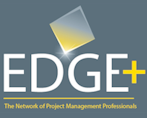‘Don’t just expect that if someone’s got a daughter, they’re going to care’
BY Jess Bell 30 Sep 2021
The case for creating a diverse workplace is well-documented. Business leaders would have to be living under a rock to have missed the news that a more diverse workplace is a more innovative, productive, and profitable one. But why then does driving positive change feel like pushing water uphill for some HR leaders?
On last year’s Equal Pay Day, Libby Lyons, the previous director of the Workplace Gender Equality Agency (WGEA) said complacency had taken hold in many organisations that were simply ticking the box. Fast forward 12 months, and Australia’s pay gap has risen to 14.2% – the equivalent of women being paid on average $13,000 less than men a year.
Complacency, combined with the disproportionate impact of the pandemic on women, is bad news for Australia. This year’s rise in the gender pay gap should be a wake-up call to all leaders.
Speaking to HRD, Diversity Council Australia CEO Lisa Annese said while it is an emotive topic and one many HR leaders are passionate about, they need to communicate Diversity, Equity & Inclusion (DEI) in a language that resonates with the C-suite.
“We need to move away from the language of social justice and equity. That will work for some people, but don’t just expect that if someone’s got a daughter, they’re going to care,” she said. “You’ve got to talk in the language of business that makes sense to them and the good news about that is there’s ample evidence to suggest a strong correlation between gender equal workplaces, gender equal leadership, and better business performance. That’s the language you
Beyond language, HR leaders need to approach DEI with a robust, evidence-based strategy, and look at the issue holistically. If a gender equal workplace is the desired outcome, there are a number of mechanisms that are effective in getting businesses to that point. Annese said HR leaders should focus on achieving equal representation in leadership, improving the capability of managers to create a respectful work environment, equal access to parental leave, and equalising pay bands across different segments of the workforce.
“They are all the measures that do work and over time, can change culture. But I think organisations sometimes underestimate how challenging this work is, and the degree of sophistication that you need to implement a diversity strategy like that. So, organisations need to adequately resource this work,” she said.
Certainly, shifting the dial on diversity is a long-term commitment and requires significant investment. But the ROI can also be quantified and used as a powerful influencer in a HR leader’s business case – especially now in a talent-tight market.
The pandemic and Australia’s closed borders have created the most competitive talent market the country has seen in decades. Without a flow of migration, businesses are having to up their game to attract top talent and an organisation’s DEI work can be mobilised as a key part of their employer value proposition. If HR leaders needed a moment to secure buy-in with the C-suite, this is it.
“If you have a gender equal workplace or if you’re on your way, you’ll be more attractive to female talent in general. That is a really great way to be an attractive employer to a bigger pool of people,” Annese said.
But it’s not just women who appreciate and understand the value of a gender equal workforce. The narrative around parental leave is beginning to change. The number of Australian firms introducing equal paid parental leave policies is on the rise, raising the bar and forcing their competitors to do the same.


